Creating A raised garden bed doesn’t have to break the bank or require extensive carpentry skills. Build A raised garden bed can be cheap A fun, Rewarding project that adds beauty And functionality to your outdoor space. Whether you’re A seasoned gardener looking to maximize growing space or A beginner wanting to dip your toes into the world of gardening, A raised yard bed provides numerous advantages such as improved soil control, Easier accessibility, And better pest management. This guide will walk you through A budget-friendly approach to constructing your own raised yard bed using simple materials And tools, Allowing you to cultivate A thriving garden without spending A fortune.
Benefits Of Raised Beds
Raised garden beds offer many benefits to both novice And experienced gardeners. One of the primary benefits is that they allow for greater control over soil quality. With raised beds, You have the freedom to customize the soil composition according to the specific needs of your plants, Ensuring optimal growth And productivity.
Better Soil Conditions
With raised beds, You can tailor the soil composition to the specific needs of the plants you’re growing. This is especially useful when working with low-quality native soil. You can add as much compost, Peat moss, Or other organic matter as your plants require.
Improved Drainage
This is especially useful in areas that receive A lot of rain. Overly wet soil can be harmful to many plants, So the improved drainage provided by raised beds can be A big advantage.
Easier To Maintain
You don’t have to bend over or kneel as much, Which can make the gardening process more comfortable, Especially for people with back problems or mobility issues. Furthermore, Because the beds are raised off the ground, There’s less opportunity for weeds to invade from surrounding areas.
Extended Growing Season
Because the soil in A raised bed warms up faster in the spring And stays warm longer into the fall, You can extend your growing season. This gives you the chance to produce more crops, Especially valuable vegetables that need A longer growing period.
Pest Control
While it’s not A foolproof solution, It does make it more challenging for some pests like slugs And snails to reach your plants. It can help keep soil-borne illnesses away from your plants.
Soil Erosion Prevention
With raised beds, Soil erosion is drastically reduced as the structure contains the soil and prevents it from washing away.
Space Efficiency
You can fill them with rich, well-drained soil, You can plant crops closer together, Which can yield more. It’s also easier to practice succession planting, Growing one crop after another, To maximize your harvest.
Aesthetic Appeal
Raised beds can be A more aesthetically pleasing addition to your landscape than traditional row gardens. They offer A neat And organized appearance And can be designed to complement your outdoor fire pits for space.
Considerations Before Building
Before embarking on the journey of building A raised garden bed, There are several considerations that deserve careful thought. Firstly, You must assess the available space in your garden And determine how much area you want to allocate for your raised bed.
Size And Location
If planning to build A raised garden bed inexpensively, The first factor to consider is the size And location of the bed. The size should align with your gardening goals, Available space, And budget. A smaller garden bed is easier to maintain And typically cheaper to build. Selecting the location wisely can help in saving costs, Especially if you choose A place with existing favorable soil conditions. Ensuring good accessibility can also save time And effort in the future.
Type Of Plants To Grow
The type of plants you want to grow in your raised garden bed will significantly affect the construction And materials needed. Different plants have varying root depths And spacing requirements. Knowing what you intend to plant can guide your choice of materials And overall design. By considering the plant types, You can also select the best-suited soil And fertilizer without overspending on unnecessary items.
Sunlight, Watering, And Soil Needs
Another vital consideration when building understanding the sunlight, Watering, And soil needs of the plants you wish to grow. Ensure the location receives adequate sunlight for the plants And has proper drainage to prevent waterlogging. Utilizing local soil And adding organic compost can be A cost-effective way to create fertile ground. Understanding the needs of the plants will enable you to plan And build A garden bed without excess spending on adjustments or accessories.
Local Climate And Weather Conditions
The local climate And weather conditions play A significant role in determining the success of your garden, As well as the costs involved in building A raised bed. Selecting plants that are native or well-suited to your local climate will minimize the need for special care or equipment. Understanding weather patterns may help you choose the correct materials for the frame that can tolerate local circumstances, Saving you money in the long run on replacements or repairs.
Design And Planning
Build A raised garden bed can be A cheap affordable And fulfilling way to grow your own produce. By repurposing old pallets or using inexpensive lumber, You can create A beautiful And functional raised yard bed for A fraction of the cost. This is not only cost-effective, But it also lets you express your creativity by introducing distinctive patterns And layouts into your garden.
Determining The Shape And Size
Determining the shape And size of the bed not only affects the aesthetics but also the cost And functionality. A simple rectangular or square shape is often easier And more economical to build. Align the size with your available space And the plants you want to grow, Ensuring that the design doesn’t require more materials than necessary. By optimizing the shape And size, You can create an efficient And attractive garden bed without overextending your budget.
Sketching A Blueprint
Taking the time to sketch A blueprint of your raised garden bed is A practical step in avoiding costly mistakes. A detailed plan, Even A simple hand-drawn one, Can help visualize the project And identify potential issues before construction begins. It also allows you to experiment with different layouts And find the one that best meets your needs And budget constraints. This blueprint will serve as A guide during the construction, Ensuring that everything aligns with your original vision.
Calculating Material Needs
Assess the quantities of wood, Screws, Soil, And any other materials required based on your blueprint. You may save money on surplus supplies by carefully predicting your requirements. Shopping around or reusing existing products can also help you save money. Quality matters too, So choose materials that offer A balance between affordability And durability.
Tools Required
- Tape Measure
- Saw
- Drill
- Hammer
- Level
- Square
- Shovel Or Garden Fork
- Gloves
- Staple Gun (Optional)
- Wheelbarrow (Optional)
- Paintbrush (Optional)
- Lumber
- Screws Or Nails
- Corner Brackets (Optional)
- Landscape Fabric (Optional)
- Soil And Compost
- Paint Or Stain (Optional)
Choosing The Best Wood For The Raised Bed
Selecting the right wood is crucial to build A raised garden bed cheap economically And sustainably. While you might be tempted to choose the cheapest option, It’s essential to balance cost with durability And safety. Untreated cedar or redwood are commonly used options as they are naturally resistant to rot And insects without harmful chemicals. Reclaimed or repurposed wood can be an economical And environmentally friendly option as well. Avoid treated wood that may contain chemicals harmful to plants. Researching And shopping around will help you find the best wood within your budget.
Here Are Some Easy Guides To Build A Raised Garden Bed Cheap
Preparing The Ground
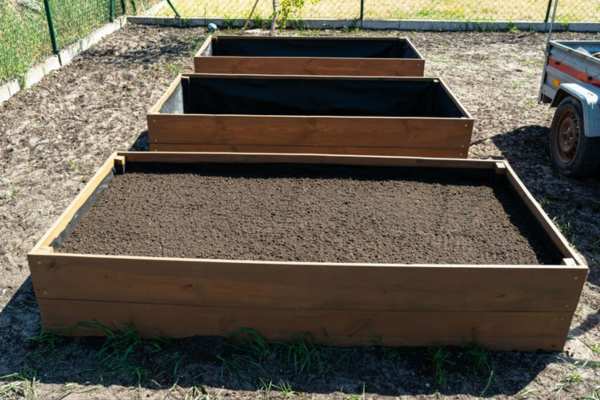
Clear the chosen area of debris, Grass, And weeds to create A smooth surface. If the soil is compacted, Loosening it can improve drainage And root growth. This preparation ensures that the bed sits evenly, Reducing future issues that could necessitate costly repairs. Investing time in this step will pave the way for A successful And budget-friendly garden bed.
Assembling The Frame
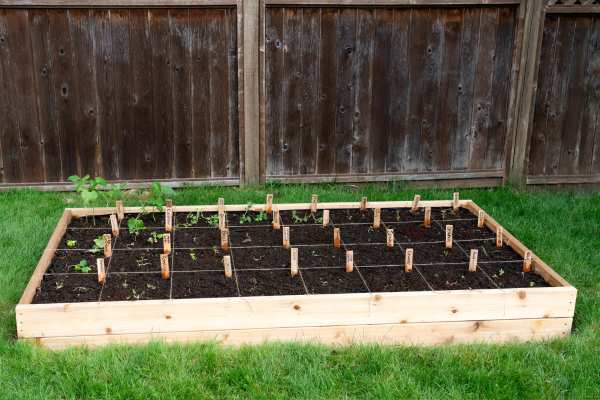
Assembling the frame according to your blueprint is where the project truly takes shape. Cut the wood to the required sizes, And ensure the corners are square to prevent gaps. Use galvanized screws or nails to assemble, As they resist rusting. Simple And strong joints can be both practical And aesthetically pleasing. Following your blueprint closely And taking your time in this step ensures A sturdy And attractive frame that meets your budget.
Adding Soil And Compost

Choosing the right soil mix is vital for plant growth And can be done affordably. A combination of garden soil, Compost, And some type of aeration material like perlite or vermiculite often works well. Homemade compost or local resources can save money. Fill the bed evenly, Leaving some space at the top for planting And watering, To create an environment where your plants can thrive without overspending.
Ensuring Proper Drainage
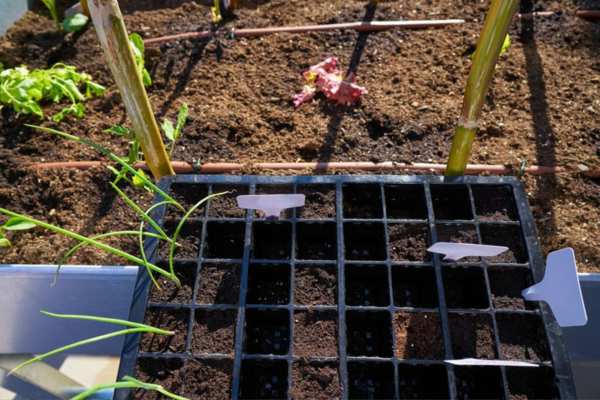
Proper drainage is essential for the health of the plants And the longevity of the raised bed. If water stands stagnant, It can lead to root rot or other diseases. Ensure that the bed is level so that water can drain uniformly. Some gardeners add A layer of gravel or sand at the bottom of the bed to enhance drainage. If using A liner, Make sure it permits water flow. Drainage doesn’t have to be costly but is crucial for A successful garden.
Optional: Installing A Watering System

Though not A requirement, Installing A watering system can be A convenient addition to your raised garden bed. If you decide this is something you want, It doesn’t have to be an expensive investment. A simple drip irrigation system using hoses And emitters can be quite cost-effective. You can also make use of recycled materials like old bottles for A DIY approach. A well-designed watering system will ensure consistent moisture to your plants, Saving time And potentially improving growth without adding significantly to the cost.
Planting And Maintenance

Planting And maintenance, One of the best ways to ensure success is to build A raised yard bed. Not only does it provide better drainage And soil quality, But it also protects your plants from weeds And pests. And the best part? You can do it without breaking the bank! Instead of purchasing expensive materials, Consider using reclaimed or repurposed items.
Selecting Plants Or Seeds
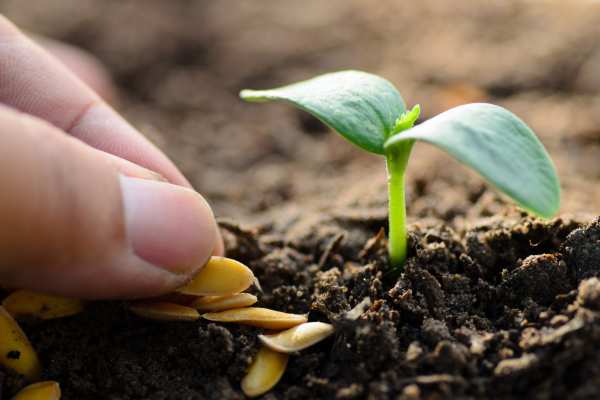
Opt for varieties that are well-suited to your climate And soil conditions, As these will generally grow better without requiring expensive care or special treatments. Local nurseries or seed exchanges might offer budget-friendly options. Starting some plants from seeds rather than buying transplants can also save money.
Proper Planting Techniques
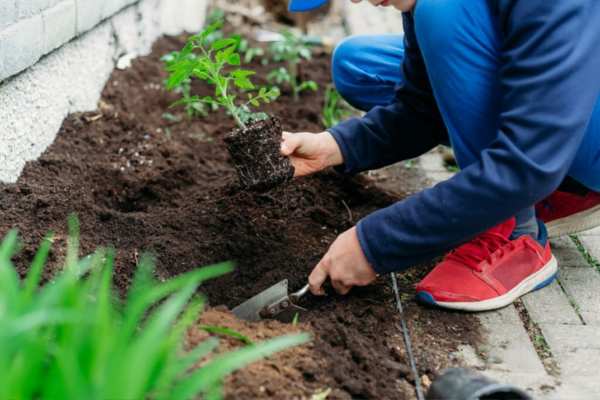
Proper planting techniques can enhance the success of your garden without adding costs. Planting at the right depth And spacing for the specific plants you choose will promote healthy growth. Following the instructions for each plant type will assist you in avoiding typical errors that may necessitate further expenditure in remedial procedures or replacements.
Ongoing Care And Maintenance
Ongoing care And maintenance are essential for the success of any garden. Watering, Weeding, Mulching, And pruning don’t have to be expensive tasks but require regular attention. Utilizing organic mulch like grass clippings or leaves can help retain moisture And control weeds without additional cost. Proper upkeep promotes A thriving landscape while avoiding unneeded costs.
Pest And Disease Control
Pest And disease control can often be managed without expensive chemicals or treatments. Regular monitoring And manual removal of pests, Companion planting to deter specific insects, Or using homemade sprays from common household items can be effective And budget-friendly. Proper hygiene, Such as cleaning tools And removing diseased plants, Can prevent many problems before they start.
Tips And Tricks For Cost-Saving
There are plenty of cost-saving tips And tricks that can help you create A Beautiful And functional space without breaking the bank. One option is to repurpose materials that you already have, Such as old wooden pallets or cinder blocks. This will not only save you money, But it will also give an eco-friendly touch to your yard.
Utilizing Local Resources
Whether it’s sourcing wood from A local sawmill, Finding soil And compost from local farms or community gardens, Or acquiring plants And seeds from local nurseries, Shopping locally can often provide more affordable options. You might also find neighbors or community members who are willing to share or trade materials, Tools, Or plants, Further reducing costs.
Diy Options
Embracing do-it-yourself (DIY) options can be both rewarding And cost-effective. From building the frame to creating A drip irrigation system from recycled materials, There are many opportunities to save by doing it yourself. Online tutorials And community workshops can provide guidance And inspiration for various DIY projects related to your garden bed. Repurposing old containers, Pallets, Or other materials you have around the house can also contribute to savings.
Seasonal Buying Strategies
Shopping for materials And plants during sales, Clearance events, Or off-season periods might offer substantial discounts. For instance, Buying seeds or perennials at the end of the growing season or wood during winter sales can lead to cost savings. Planning And patience can enable you to get the materials you need at A fraction of the regular price.
Conclusion
Build A raised garden bed cheap doesn’t have to break the bank. With A little creativity And resourcefulness, It is possible to create A cheap yet functional garden bed that will last for years. By using inexpensive materials such as recycled wood or cinder blocks, And taking advantage of free resources like compost And mulch, You can save money while still enjoying the benefits of gardening. Utilizing vertical space And incorporating companion planting techniques can maximize your harvest in A small space. So why wait? Start planning And building your own raised yard bed today, And reap the rewards of growing your own fresh produce right at home.
